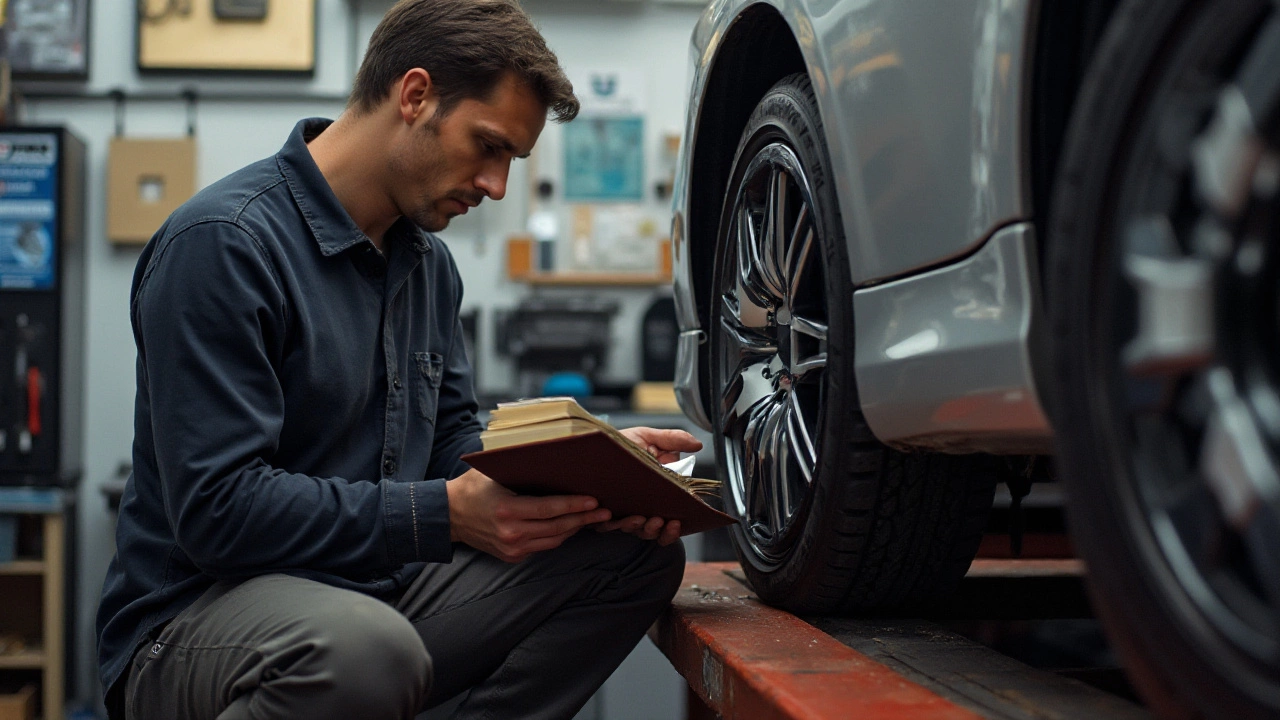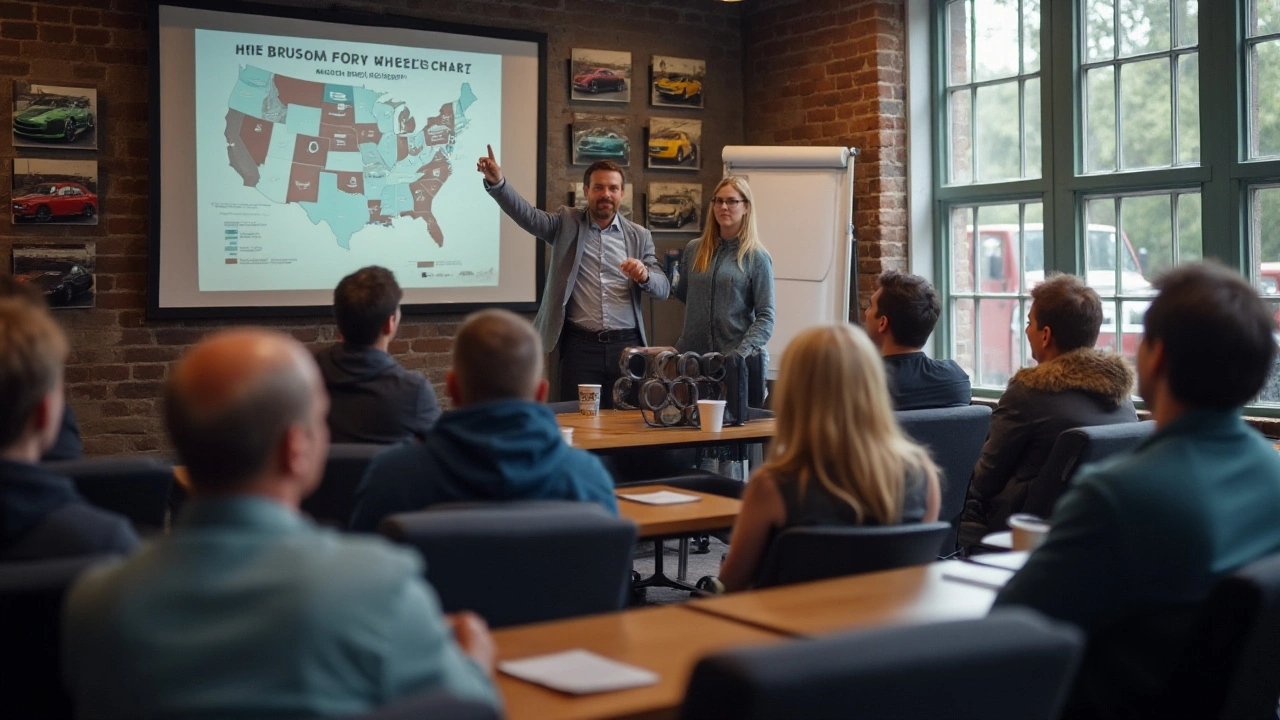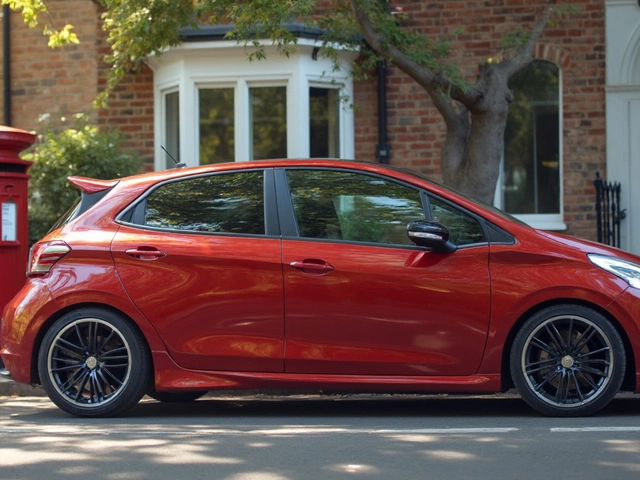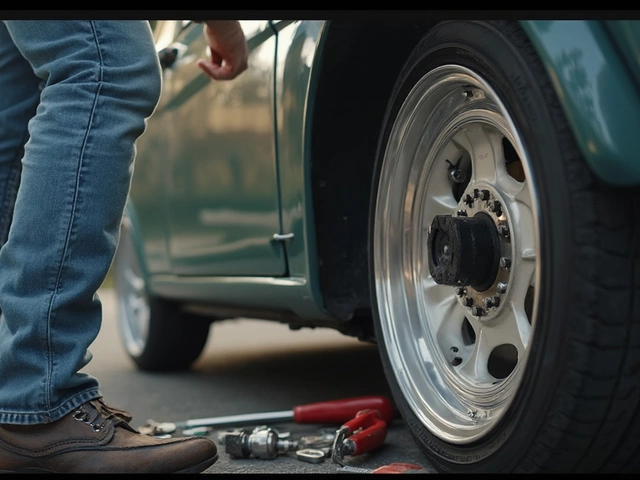When it comes to vehicle customization, wheel spacers often find themselves on both ends of the debate. These simple yet impactful components can completely change the driving dynamics and appearance of a vehicle. However, before diving into this modification, it's important to understand the legal intricacies that could trip up even the most well-intentioned car enthusiast.
Across the United States, regulations concerning wheel spacers vary significantly. Some states have specific laws addressing their use, while others leave a gray area that can result in confusion or unintentional non-compliance. This article dives into what wheel spacers are, examines the legal considerations, and offers tips to ensure your installation adheres to local laws.
- What Are Wheel Spacers?
- Legal Aspects of Wheel Spacers in the US
- Safety Considerations
- Tips for Choosing and Installing Wheel Spacers
What Are Wheel Spacers?
When it comes to modifying a vehicle, one might overlook the significance of something as unassuming as a disk of metal, but wheel spacers carry a hefty impact. These subtle aftermarket components sit between the wheel hub and the wheel itself, effectively pushing the wheel outward from the body of the car. This seemingly simple adjustment can lead to major changes in both the aesthetic appeal and the functional capability of the vehicle. Often made from aluminum or steel, wheel spacers come in various thicknesses—ranging from a few millimeters to several inches—allowing drivers to customize how far the wheels protrude.
The primary purpose of installing wheel spacers is to increase the track width of the vehicle, which can result in improved stability and handling. By moving the wheels further apart, cars often gain a more aggressive stance and cornering performance can be enhanced. The increased width helps in distributing the weight of the car more evenly, thereby lowering the center of gravity and potentially improving the grip during turns. It's no surprise that enthusiasts, particularly those with performance vehicles or larger tires, might be drawn to wheel spacers for enhanced on-road performance.
"Wheel spacers are popular among off-roaders and street racers alike, as they allow for an optimal combination of style and function," notes Car and Driver's automotive expert. "When installed correctly, they can enhance the vehicle's performance."
But the benefits of wheel modifications aren't just limited to performance. There's also a notable cosmetic transformation that comes along. For instance, a wider stance can make even a modest car look sportier and more assertive. Wheel spacers can also be a practical solution for fitting aftermarket wheels that are incompatible with the stock hub assembly due to unique offset requirements. By acting as a bridge, spacers ensure a proper fit without the need to replace the entire wheel. For car owners wishing for a simple yet effective enhancement, they could be a great option.
However, it's important to acknowledge that not all wheel spacers are created equal. Quality varies significantly across manufacturers, and choosing the right product involves a careful consideration of the material, brand reputation, and size. The safety concerns cannot be overstated, as inappropriate installation can lead to serious issues such as wheel imbalance or even detachment. For those considering spacers for their vehicle modifications, it’s worthwhile consulting with a professional and possibly opting for brands known for engineering excellence. Proper installation and maintenance are crucial to ensuring safety and achieving the desired benefits.

Legal Aspects of Wheel Spacers in the US
In the sprawling and diverse landscape of the United States, the legality of wheel spacers is a topic fraught with regional nuances. Each state carries its own set of traffic laws, often leaving car modifiers scratching their heads over what's permissible or not. For instance, California, renowned for its stringent vehicle regulations and emissions standards, scrutinizes every detail of car modifications. It doesn’t outright ban wheel spacers, but their use shouldn’t compromise the overall safety of the vehicle. State officials can deem a vehicle unsafe if the spacers impair handling or cause the tires to extend too far out, leading to potential citations or mandatory inspections.
Contrast this with a state like Texas, where there is a bit more leeway in customization choices. Here, the emphasis heavily lies on ensuring the vehicle remains safe and functional, putting the onus on the driver to maintain control and prevent modifications that could lead to accidents. Still, a critical point to consider is the discretion with which law enforcement officers can interpret these laws. While some might let minor modifications slide, others could be stringent in their assessments, demanding corrections or issuing fines.
One fascinating aspect of this legal web is the divergent views on aesthetic versus performance enhancements. Some states swing towards a more liberal stance if the changes enhance vehicle performance, such as improved handling or traction provided by high-quality wheel spacers. In an interview, automobile law expert David Andrews stated,
"Many states are slowly understanding that not all modifications are created equal. Performance enhancements, when done right, can indeed lead to safer driving conditions."This evolving perspective gives hope to dedicated car enthusiasts pushing for clearer, more uniform legislation across the country.
Yet, the complexity doesn’t end there. When installing wheel spacers, it’s also essential to consider manufacturer guidelines. Many vehicle manufacturers have specific limitations and recommendations regarding the size and type of spacers that can be safely used. Overstepping these benchmarks not only risks mechanical failure but can void warranties and clash with insurance policies. Thus, educating oneself about both state laws and manufacturer stipulations is vital for anyone considering this modification. Being proactive, consulting with professionals, and staying up-to-date with legislative changes can help ensure that your modified vehicle remains both legal and safe on the road.

Safety Considerations
When considering the addition of wheel spacers to your vehicle, safety should always be at the forefront of your decision-making process. Wheel spacers can be a useful modification for enhancing the stance and track width of a vehicle, but improper use or poor quality can lead to serious safety concerns. Firstly, it's essential to choose wheel spacers from reputable manufacturers that adhere to high engineering standards. Low-quality spacers may not withstand the stresses and forces exerted on them during vigorous driving, leading to catastrophic failures. Ensuring the spacers are made from high-grade materials, such as billet aluminum, can significantly reduce the risk associated with this type of modification.
Proper installation is another critical factor in maintaining safety when using wheel spacers. It is important to follow the manufacturer’s directions meticulously, whether you're installing them yourself or having a professional do it. Incorrect installation can result in uneven torque distribution across the vehicle's wheels, which can compromise vehicle control. An often-overlooked aspect is the need for longer wheel studs or bolts, which are necessary if the spacer's thickness exceeds a certain threshold. This alteration ensures that the wheel is securely attached and reduces the likelihood of shearing off under load.
Moreover, regular maintenance checks are crucial post-installation. Periodically inspect your wheel spacers for any signs of wear or damage, such as cracks or deformities, and re-torque the bolts to manufacturer specifications after the car has been driven for the first 500 miles post-installation. Routine checks can preemptively catch issues before they escalate into more significant problems. A wheel coming off while traveling at high speed can have dire consequences both for the driver and other road users. "Safety should be a matter of both heart and science," once said an automotive safety expert, highlighting the importance of a rigorous approach to vehicle modifications.
Looking beyond immediate safety concerns, there are additional long-term impacts on the vehicle to consider. Adding wheel spacers changes the geometry of your car’s suspension system, notably affecting the load on wheel bearings. This can lead to accelerated wear and potentially compromise the handling characteristics of your vehicle, affecting its overall performance on the road. Therefore, it’s advisable to consult with a suspension specialist to ensure that your car's suspension setup is capable of handling the modifications, thereby extending both the life of your vehicle and upholding its safety standards.
Finally, taking a look at statistics might also present some enlightening insights. A study conducted by a major automotive safety institute found that improper installation of aftermarket parts, including wheel spacers, accounts for a small but significant percentage of mechanical malfunctions in modified vehicles annually. This underscores the necessity of adhering to stringent safety protocols. Remember, keeping your car safe not only protects you but makes the roads safer for everyone.

Tips for Choosing and Installing Wheel Spacers
Engaging in any automotive modification, including the addition of wheel spacers, requires careful consideration to ensure both safety and compliance with vehicle regulations. These handy components can affect your car's track width, handling, and aesthetic appeal. However, selecting the right spacers and properly installing them makes all the difference between an improved driving experience or, potentially, putting yourself at risk. The first thing to consider is the appropriate size. Too large a spacer can put undue stress on your vehicle's wheel assembly, while too small may not achieve the desired visual or performance effect. Measuring precisely for spacer size involves understanding your car’s current wheel offset and how much additional space you want. Every vehicle model can have different specifications, so aligning this with individual needs is crucial.
"When deciding on modifications, always prioritize safety and function over aesthetics. The right balance can lead to superior outcomes," says James T. Bartlett, a seasoned auto mechanic with over two decades of experience.
Next up, material composition plays a pivotal role. Quality wheel spacers are commonly made from aluminum or steel, each offering distinct benefits. Aluminum spacers are favored for their lightweight nature and resistance to corrosion, which can be particularly advantageous in regions with harsh weather conditions or where road salt is prevalent. Steel, on the other hand, offers enduring toughness and is less susceptible to deformation over time, though it adds more weight to your setup. Deciding between these materials depends on the driving conditions in your area as well as your expectations for vehicle handling.
Beyond selection, proper installation is key. Start by gathering the necessary tools: a torque wrench, socket set, and jack stands. These are essential for safely lifting your vehicle and accurately securing the spacers. Before installing, clean both the spacers and the wheel hub surface to prevent dirt and debris from compromising the fit. Our recommended steps for installation usually follow this sequence:
- Secure the vehicle using jack stands and remove the wheels.
- Clean the hub surface and the back of the wheel thoroughly.
- Align the wheel spacer correctly onto the hub, ensuring it sits flush without any gaps.
- Fasten the spacer with lug nuts, tightening them in a star pattern to evenly distribute force.
- Use a torque wrench to tighten according to your vehicle’s specifications for optimal safety.
- Reattach the wheels and lower the vehicle back down.
During the first few weeks after installation, it’s wise to periodically check the torque levels of your spacers to confirm everything remains secure. Some experts also recommend a test drive to assess any differences in handling, promptly addressing anything unusual. As a final note, keep abreast of any local regulations about modifications. While legality of wheel spacers can differ widely across states, ensuring that your vehicle stays legally compliant can save you from unnecessary fines or headaches down the road. With the right choice and careful installation, wheel spacers can make a significant positive impact on both the looks and performance of your vehicle.




